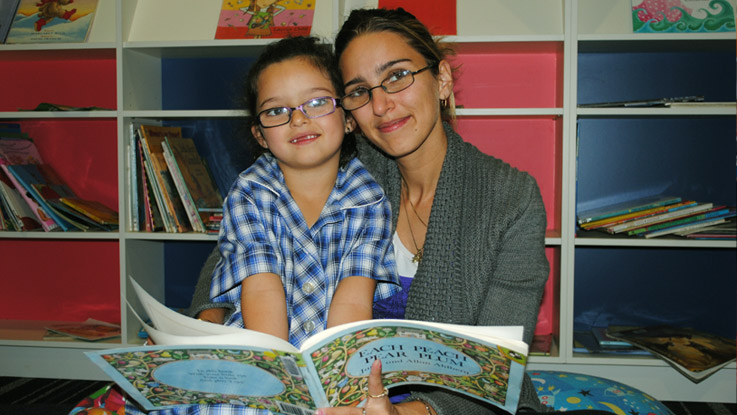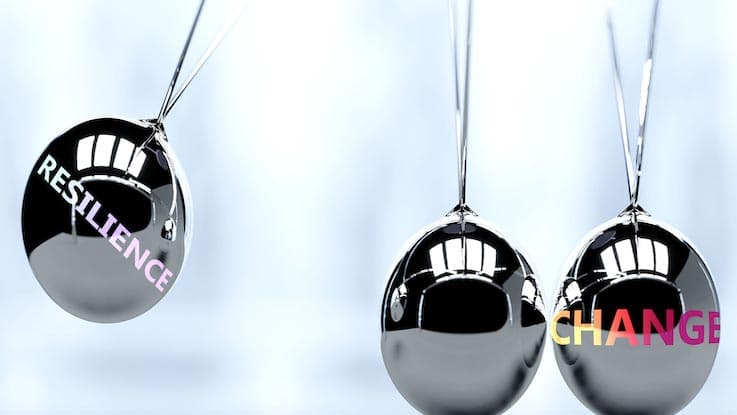
NFPs must undergo their own change to meet society’s challenges

As society’s needs evolve so must the vision of not for profits, argues The Smith Family's Doug Taylor.
Dough Taylor
Chief Executive Officer at The Smith Family
My lived experience of a global pandemic, that will take its place in history, has given me a new appreciation for our not-for-profit predecessors. They rode the wave of economic depressions, conflicts, natural disasters and international crises through different decades.
One of the “superpowers” that has enabled organisations to adapt to these challenges, has been the courage to make important changes. But, that’s not all – they’ve also had the courage to be changed in the process.
At The Smith Family, we’ve been focused on creating change for many years – not only adapting to the changing needs of the community, but reinventing our organisation in the process. Change, for the better, has always been at the core of who we are. The “Smiths”, our entrepreneurial founders, were innovators from way back – always with a focus on making the biggest difference for the people who needed it most.
One of the most remarkable examples of this was the reinvention of The Smith Family as an education-focused organisation. Up until the 1980s, we were focused predominantly on the provision of emergency relief. For families in desperate need of help to pay an electricity bill or put food on the table, The Smith Family could assist.
But in the 1980s, Australian families faced a different set of challenges. High unemployment and high inflation, caused by the worldwide recession, created intense economic uncertainty. Manufacturing industries began to collapse, taking with them many employment options for lower and unskilled workers.
The recession prompted reflection across the social welfare sector, as charity organisations considered how best to strategically respond to the growing economic crisis. Within The Smith Family, frontline workers began to report that families were raising concerns about their children and, in particular, their education options.
Feedback from family focus groups reinforced what staff had been hearing anecdotally. Parents and carers were worried most about the future, and above all they wanted better education options – and outcomes – for their children.
The Smith Family entered a period of intense innovation, with a plan to provide an education support program in step with the needs of the community. Within a year, The Smith Family had developed a pilot project, EDU-CATE, with the aim of providing scholarship support to 60 high school students in Sydney (thanks to the support of Barbara and David Thomas). The students would receive cash assistance but also be offered advice, support and mentorship as they navigated challenges at school. Eventually this evolved into the current incarnation of our Learning for Life education program, which today supports more than 58,000 students across the country.
The Smith Family’s story is not so unique. Many not for profits have been pioneers and innovators in responding to the changing needs of the community, particularly for people who experience disadvantage most acutely. But what about the future – how well placed are NFPs to use this “superpower” and what are the next big shifts we will need to adapt towards?
I remain optimistic about our work in social innovation, but there are very real challenges for our organisations. Here are a few:
- There are a range of challenges people in the Australian community face that seem perennial, and for which there has been limited progress. For example, homelessness, long-term unemployment, intergenerational disadvantage, and the continued social and economic exclusion of Australia’s First Peoples.
- It is harder to fund our work in innovation because of declining surpluses and untied revenue that would typically be used to invest in this work (see the Paying What It Takes report commissioned by Philanthropy Australia).
- The nature of innovation in NFPs has also changed to be focused on the customer, with solutions and product-differentiation seen in increasingly competitive human services and supporter markets.
- The culture of NFPs has changed, as government funding has increased to deliver human services. The combination of requisite compliance and risk-management has meant a shift in the character of our organisations away from social innovation.
These challenges are real, but not insurmountable, and would be aided by applying a “systems” view in addressing significant social challenges – as well as building a more effective ecosystem to support the sector’s work in innovation. These two ideas are well developed by the thinking of Charlie Leadbeater and The Australian Centre for Social Innovation (of which I’m a voluntary director).
Leadbeater and his co-author Jennie Winhall, in their paper Building Better Systems: A Green Paper on System Innovation, suggest that a system view for social innovation is necessary when the challenge being experienced by people is stuck (deep rooted and persistent) with limited seeming progress (despite investment) or when the challenge is new for people and beyond the design of the current system.
This sounds familiar to me, and is probably the next frontier for Australian NFPs in addressing the challenges that people experience. For too long, we have had a limited view. Perhaps now a broader frame of reference will help us take a step change in social innovation? It’s worth learning more about these ideas, in particular, the authors’ reflections on the use of purpose, power, resource flows and relationship. But that’s all for another piece someday.
It’s also interesting to apply this type of thinking to the social-innovation ecosystem itself and see how we fare. This is exactly what The Australian Centre for Social Innovation has done through its paper Social R&D: A new way to accelerate progress on tough social challenges. The paper makes a compelling case for applying the best of R&D from other sectors, to ensure we see more effective progress in social reform.
The key insight is to develop a comprehensive ecosystem with more functional components, such as:
- workforce – attracting people with the right skills and continuing to build their skills and provide recognition;
- innovation – supporting the whole innovation process, sharing learning and providing funding relevant to each stage;
- coordination – ensuring there are relevant levels of coordination commensurate to the problem being addressed; and
- incentives – creating ways for people to invest in better solutions and for different funding and commissioning environments that ensure money flows to effective outcomes.
This new way of thinking suggests there are some step changes required for not for profits, as we think beyond our organisations to the systems in which we operate, and more importantly the contexts in which people live. We will have to think in new ways to keep our innovation superpower relevant for this new phase in our work.
Originally published 2nd May, 2022 on ProBono Australia
